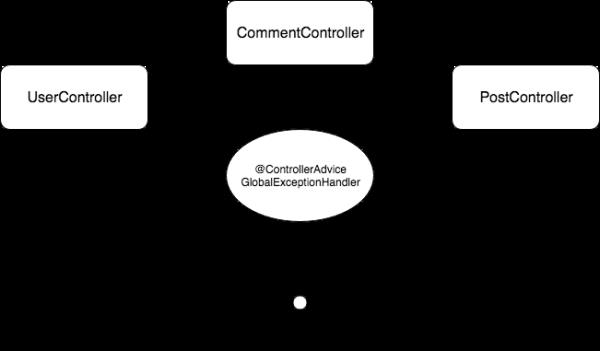spring中<tx:advice></tx:advice>是啥意思?作用是啥?谁能简单说下
Posted
tags:
篇首语:本文由小常识网(cha138.com)小编为大家整理,主要介绍了spring中<tx:advice></tx:advice>是啥意思?作用是啥?谁能简单说下相关的知识,希望对你有一定的参考价值。
<tx:advice id="tv" transaction-manager="transactionManager">
<tx:attributes>
<tx:method name="save*" propagation="REQUIRED"/>
</tx:attributes>
</tx:advice>
这段话是什么意思,小弟刚学框架,谢谢
意思是这个事物advice的管理者为transactionManager,从配置文件中应该能够找到一个ID为transactionManager的bean,而这个建议中规定了save方法的传输方式为required,也就是说没有sessionfactory的时候会自动建立,有的时候就不会建立了。
当然了这只是规定了一个advice,你还需要指定一个aop:pointcut去引用他,例如
<aop:config>
<aop:pointcut id="bussinessService"
expression="execution(public * x.y..*.*(..))" />
<aop:advisor pointcut-ref="bussinessService"
advice-ref="tv" />
</aop:config>
这样这个advice就被联系到了bussinessService这个pointcut上了。

扩展资料
<tx:method >的属性详解
1、readOnly
事务属性中的readOnly标志表示对应的事务应该被最优化为只读事务。如果值为true就会告诉Spring我这个方法里面没有insert或者update,你只需要提供只读的数据库Connection就行了,这种执行效率会比read-write的Connection高,所以这是一个最优化提示。
在一些情况下,一些事务策略能够起到显著的最优化效果,例如在使用Object/Relational映射工具(如:Hibernate或TopLink)时避免dirty checking(试图“刷新”)。
2、timeout
在属性中还有定义“timeout”值的选项,指定事务超时为几秒。一般不会使用这个属性。在JTA中,这将被简单地传递到J2EE服务器的事务协调程序,并据此得到相应的解释。
<tx:advice>:事务通知定义,用于指定事务属性,其中“transaction-manager”属性指定事务管理器,并通过< tx:attributes 指定具体需要拦截的方法。
<tx:method name="save*">. 表示将拦截以save开头的方法,被拦截的方法将应用配置的事务属性: propagation="REQUIRED"表示 传播行为是Required, isolation="READ_ _COMMITTED" 表示隔离级别是提交读。
<tx:method name="*">: 表示将拦截其他所有方法,被拦截的方法将应用配置的事务属性:propagation="REQUIRED"表示传播行为是Required, isolation= "READ_ COMMITTED"表示隔离级别是提交读,read-only= "true"表示事务只读。
3、关于propagation属性的7个传播行为
REQUIRED:指定当前方法必需在事务环境中运行,如果当前有事务环境就加入当前正在执行的事务环境,如果当前没有事务,就新建一个事务。这是默认值。
SUPPORTS:指定当前方法加入当前事务环境,如果当前没有事务,就以非事务方式执行。
MANDATORY:指定当前方法必须加入当前事务环境,如果当前没有事务,就抛出异常。
REQUIRES_NEW:指定当前方法总是会为自己发起一个新的事务,如果发现当前方法已运行在一个事务中,则原有事务被挂起,我自己创建一个属于自己的事务,直我自己这个方法commit结束,原先的事务才会恢复执行。
NOT_SUPPORTED:指定当前方法以非事务方式执行操作,如果当前存在事务,就把当前事务挂起,等我以非事务的状态运行完,再继续原来的事务。
参考技术A 意思是这个事物advice的管理者为transactionManager,你从配置文件中应该能够找到一个ID为transactionManager的bean,而这个建议中规定了save方法的传输方式为required,也就是说没有sessionfactory的时候会自动建立,有的时候就不会建立了。当然了这只是规定了一个advice,你还需要指定一个aop:pointcut去引用他,例如
<aop:config>
<aop:pointcut id="bussinessService"
expression="execution(public * x.y..*.*(..))" />
<aop:advisor pointcut-ref="bussinessService"
advice-ref="tv" />
</aop:config>
这样这个advice就被联系到了bussinessService这个pointcut上了本回答被提问者和网友采纳 参考技术B 事务
哪些方法需要事务支持
spring tx:advice事务配置
<!-- 配置事务管理器 -->
<bean id="transactionManager" class="org.springframework.orm.hibernate3.HibernateTransactionManager">
<property name="sessionFactory">
<ref bean="mySessionFactory"/>
</property>
</bean>
注:这是作为公共使用的事务管理器Bean。这个会是事先配置好的,不需各个模块各自去配。
- 下面就开始配置各个模块所必须的部分,在各自的applicationContext-XXX-beans.xml配置的对于事务管理的详细信息。
首先就是配置事务的传播特性,如下:
<!-- 配置事务传播特性 -->
<tx:advice id="TestAdvice" transaction-manager="transactionManager">
<tx:attributes>
<tx:method name="save*" propagation="REQUIRED"/>
<tx:method name="del*" propagation="REQUIRED"/>
<tx:method name="update*" propagation="REQUIRED"/>
<tx:method name="add*" propagation="REQUIRED"/>
<tx:method name="find*" propagation="REQUIRED"/>
<tx:method name="get*" propagation="REQUIRED"/>
<tx:method name="apply*" propagation="REQUIRED"/>
</tx:attributes>
</tx:advice>
<!-- 配置参与事务的类 -->
<aop:config>
<aop:pointcut id="allTestServiceMethod" expression="execution(* com.test.testAda.test.model.service.*.*(..))"/>
<aop:advisor pointcut-ref="allTestServiceMethod" advice-ref="TestAdvice" />
</aop:config>
需要注意的地方:
(1) advice(建议)的命名:由于每个模块都会有自己的Advice,所以在命名上需要作出规范,初步的构想就是模块名+Advice(只是一种命名规范)。
(2) tx:attribute标签所配置的是作为事务的方法的命名类型。
如<tx:method name="save*" propagation="REQUIRED"/>
其中*为通配符,即代表以save为开头的所有方法,即表示符合此命名规则的方法作为一个事务。
propagation="REQUIRED"代表支持当前事务,如果当前没有事务,就新建一个事务。这是最常见的选择。
(3) aop:pointcut标签配置参与事务的类,由于是在Service中进行数据库业务操作,配的应该是包含那些作为事务的方法的Service类。
首先应该特别注意的是id的命名,同样由于每个模块都有自己事务切面,所以我觉得初步的命名规则因为 all+模块名+ServiceMethod。而且每个模块之间不同之处还在于以下一句:
expression="execution(* com.test.testAda.test.model.service.*.*(..))"
其中第一个*代表返回值,第二*代表service下子包,第三个*代表方法名,“(..)”代表方法参数。
(4) aop:advisor标签就是把上面我们所配置的事务管理两部分属性整合起来作为整个事务管理。
下文转自http://blog.csdn.net/dw_java08/article/details/7682890
applicationContext-common.xml :
<?xml version="1.0" encoding="UTF-8"?>
<beans xmlns="http://www.springframework.org/schema/beans"
xmlns:xsi="http://www.w3.org/2001/XMLSchema-instance"
xmlns:aop="http://www.springframework.org/schema/aop"
xmlns:tx="http://www.springframework.org/schema/tx"
xsi:schemaLocation="http://www.springframework.org/schema/beans http://www.springframework.org/schema/beans/spring-beans-2.0.xsd
http://www.springframework.org/schema/aop http://www.springframework.org/schema/aop/spring-aop-2.0.xsd
http://www.springframework.org/schema/tx http://www.springframework.org/schema/tx/spring-tx-2.0.xsd">
<!-- 配置sessionFactory -->
<bean id="sessionFactory" class="org.springframework.orm.hibernate3.LocalSessionFactoryBean">
<property name="configLocation">
<value>classpath:hibernate.cfg.xml</value>
</property>
</bean>
<!-- 配置事务管理器 -->
<bean id="transactionManager" class="org.springframework.orm.hibernate3.HibernateTransactionManager">
<property name="sessionFactory">
<ref bean="sessionFactory"/>
</property>
</bean>
<!-- 配置事务的传播特性 -->
<tx:advice id="txAdvice" transaction-manager="transactionManager">
<tx:attributes>
<tx:method name="add*" propagation="REQUIRED"/>
<tx:method name="del*" propagation="REQUIRED"/>
<tx:method name="modify*" propagation="REQUIRED"/>
<tx:method name="*" read-only="true"/>
</tx:attributes>
</tx:advice>
<!-- 那些类的哪些方法参与事务 -->
<aop:config>
<aop:pointcut id="allManagerMethod" expression="execution(* com.z2sci.soa.manager.*.*(..))"/>
<aop:advisor pointcut-ref="allManagerMethod" advice-ref="txAdvice"/>
</aop:config>
</beans>
spring使用 <tx:advice>和 <aop:config> 用来配置事务,具体如何配置你可以参考Spring文档。
我解释一下(* com.z2sci.soa.manager.*.*(..))中几个通配符的含义:
|第一个 * —— 通配 任意返回值类型|
|第二个 * —— 通配 包com.z2sci.soa.manager下的任意class|
|第三个 * —— 通配 包com.z2sci.soa.manager下的任意class的任意方法|
|第四个 .. —— 通配 方法可以有0个或多个参数|
综上:包com.z2sci.soa.manager下的任意class的具有任意返回值类型、任意数目参数和任意名称的方法
<tx:advice/> 有关的设置
这一节里将描述通过 <tx:advice/> 标签来指定不同的事务性设置。默认的 <tx:advice/> 设置如下:
事务传播设置是 REQUIRED
隔离级别是 DEFAULT
事务是 读/写
事务超时默认是依赖于事务系统的,或者事务超时没有被支持。
任何 RuntimeException 将触发事务回滚,但是任何 checked Exception 将不触发事务回滚
这些默认的设置当然也是可以被改变的。 <tx:advice/> 和 <tx:attributes/> 标签里的 <tx:method/> 各种属性设置总结如下:
表 9.1. <tx:method/> 有关的设置
| 属性 | 是否需要? | 默认值 | 描述 |
| name | 是 | 与事务属性关联的方法名。通配符(*)可以用来指定一批关联到相同的事务属性的方法。 如:‘get*‘、‘handle*‘、‘on*Event‘等等。 | |
| propagation | 不 | REQUIRED | 事务传播行为 |
| isolation | 不 | DEFAULT | 事务隔离级别 |
| timeout | 不 | -1 | 事务超时的时间(以秒为单位) |
| read-only | 不 | false | 事务是否只读? |
| rollback-for | 不 | 将被触发进行回滚的 Exception(s);以逗号分开。 如:‘com.foo.MyBusinessException,ServletException‘ | |
| no-rollback-for | 不 | 不 被触发进行回滚的 Exception(s);以逗号分开。 如:‘com.foo.MyBusinessException |
以上是关于spring中<tx:advice></tx:advice>是啥意思?作用是啥?谁能简单说下的主要内容,如果未能解决你的问题,请参考以下文章